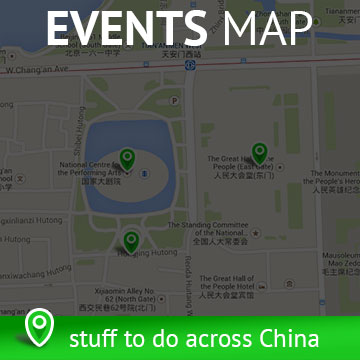Ah, Back To The Future. Great Scott did I ever ponder the title of that movie when I was a kid! It completely threw me for a loop. I’d just get to sorting out the direction it was pointing me when I’d hit that last word and all was lost. It is fitting then that it sits on top this post about the Chinese language in general, and one character in particular.
 Hòu, simple enough really. I mean, without anything other than a bit of phonetic Chinese know-how it could bring to mind gardening, Amsterdam or gangster rap… these are all pleasant things – but DO NOT be misled. I suspect that this little innocent looking six-stroke wonder is responsible for much of the confusion us laowai face in both learning the language and culture of China.
Hòu, simple enough really. I mean, without anything other than a bit of phonetic Chinese know-how it could bring to mind gardening, Amsterdam or gangster rap… these are all pleasant things – but DO NOT be misled. I suspect that this little innocent looking six-stroke wonder is responsible for much of the confusion us laowai face in both learning the language and culture of China.
Where else can you get a definition that means both after and behind. Is my Westernized universe so lateral that this just confuses the hell out of me? Has my mind been tempered too long by the idea that ‘the future is the way forward’?
To clarify to anyone new to the language, here are some examples of the character åŽ in use (with some c&p help from Wenlin):
ä»¥åŽ | yÇhòu n. after; afterwards; later; hereafter
æœ€åŽ | zuìhòu adj. last; final
ç„¶åŽ | ránhòu conj. and then; after that
ä¹‹åŽ | zhÄ«hòu* suf. later; after; afterwards
åŽé¢ | hòumian n. â‘ at the back; in the rear; behind â‘¡later
è½åŽ | luòhòu adj. backward ~ v. fall/lay behind
ä»ŠåŽ | jÄ«nhòu adv. henceforth; hereafter
èƒŒåŽ | bèihòu adv. behind; in the rear; behind/at the back
It took me a while, but I finally figured out how to break this idea down so that my simple squishy stuff could process it. I was looking at it wrong. I was looking at it in a self-centric model. I felt that if I said “behind” it must be “behind” me, and the future is very definitely not that. However, if I adjust my thinking just a twitch, and I put the “after” “behind” the future (the clouds of the unknown, or what-have-you)… then it begins to add up in a very metaphysical way…
 Previous to hòu being the bane of my Chinese-learning experience, it was xià /shà ng that got me all hissy. These characters, meaning down and up respectively, are quite simple to grasp no doubt. However, you start using them to organize your day and it fucks everything up.
Previous to hòu being the bane of my Chinese-learning experience, it was xià /shà ng that got me all hissy. These characters, meaning down and up respectively, are quite simple to grasp no doubt. However, you start using them to organize your day and it fucks everything up.
Generally speaking I think we (or at least I) picture our day as the sun rises. A rather literal view of things, and one that doesn’t necessarily fit the Chinese way of doing it. When I picture “morning” I think the “bottom” of my day, as the sun rises, we hit afternoon, and my day progresses upwards until eventually I’ve reached evening and night.
In Chinese it is the polar opposite, as this chart hopes to illustrate:
| morning | 早上 zǎoshà ng |
| late morning | ä¸Šåˆ shà ngwÇ” |
| noon | ä¸åˆ zhÅngwÇ” |
| afternoon | ä¸‹åˆ xià wÇ” |
| evening | 晚上 wǎnshang |
| night | 晚 wǎn |
As you can see, morning starts at the top (early up, if you will) and proceeds through “up noon”, “middle noon” and “down noon” until you hit “late up”…
I solved this one with a simple lexical twist as well by reaching into my potato bread roots and remembering the greeting: “top o’ the mornin’ to ye”.
Alright, alright, I’ll concede that most of this is an operation in futility, as it is dealing with the semantics of two diverse and culturally independent languages. However, I do feel it goes a long way to explaining why even the simplest concepts of Chinese and China at large are sometimes damn tough to wrap our Western heads around.
I do have to wonder though if Zemeckis studied Chinese.








Hey, cool post =] i was thinking about this very topic earier in the day lol… Hmm I am an Indian living in Australia but I’ve always thought of morning as the start, the top and night is the end the bottom (winding down?)
Paul